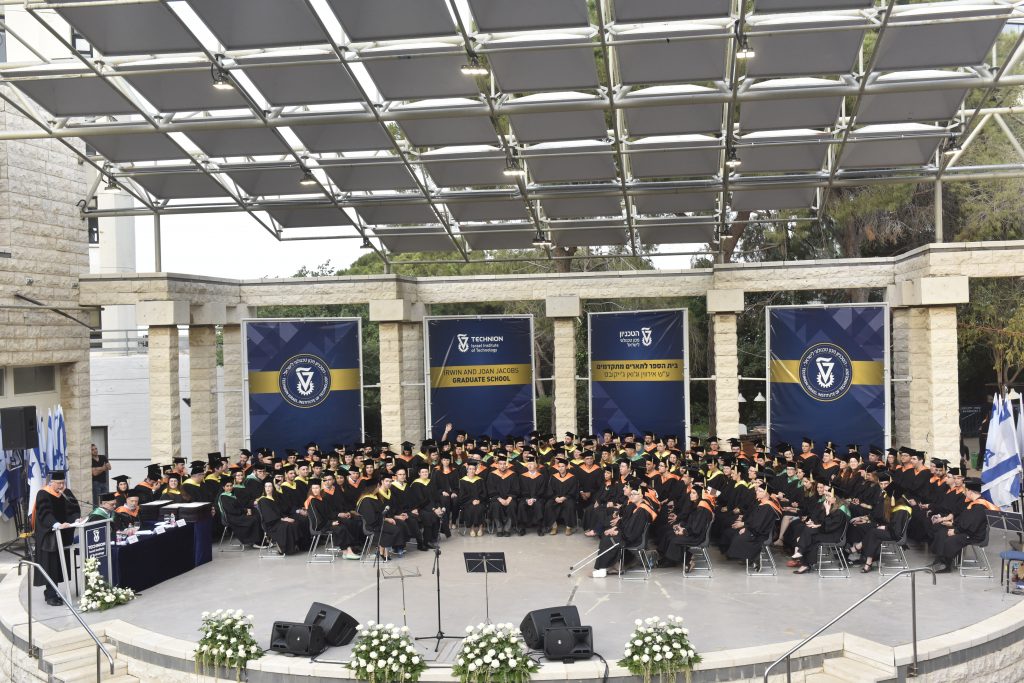Technion celebrates 70 years of Israeli innovation with this commemorative 2018 edition of the President’s Report.
Author: shlomi ben-oz
Congratulations to the 216 New Doctors!
Please Welcome Technion’s 216 Newest Doctors
On Monday, May 28, the Technion held its annual doctoral degree ceremony, commenced by Technion President Prof. Peretz Lavie and Prof. Dan Givoli, Dean of the Graduate School. Prof. Aviad Shapira of the Faculty of Civil and Environmental Engineering, who was master of ceremonies, had also been the advisor to the oldest doctor at the ceremony: Albert Ben-David, 74, who had also completed both his bachelor’s and master’s degrees at the Technion.
“The research and academic achievements of faculty members and students place the Technion at the center of the Start-Up Nation; the Technion’s vision has always been consistent with the development of the State of Israel. Technion’s PhD graduates hold key positions in all industries in the State of Israel, and have a central role in transforming the State of Israel into a global technological powerhouse,” said President Prof. Lavie.
“You are a very important resource for maintaining the high standard of research that the Technion is known for all over the world and is proud of,” said Prof. Givoli. “You and your advisors are the Technion’s research foundation.”
Doctoral degrees were awarded to 216 graduates, 43 percent of whom were women. Most graduates are native-born Israelis, with other originating from Italy, Georgia, South Africa, South Korea, Lithuania, China, and countries of the former Soviet Union. The largest age bracket was 30-40, while the youngest graduate was 25 years old.
“The Technion was a second home and a friendly environment when I needed them most,” Dr. Cohen said. “What characterizes this wonderful institution is that while it consistently crosses boundaries, it is careful to preserve its warmth and humanity – and that is exactly how it represents Israeli society,” said Dr. Dvora Cohen on behalf of the graduates., Dr. Cohen completed her doctorate at the Viterbi Faculty of Electrical Engineering under the guidance of Prof. Yonina Eldar. She immigrated from France alone at age 18, and began studies at Technion within a few months.
The doctoral dissertations presented by the graduates reflect the variety of fields studied at the Technion. Examples of research conducted by the new doctors include: motor markers of ADHD; the relationship between speed of travel, road characteristics, and motor vehicle accidents; harvesting fruit using a robot; cloud network sharing; optical accelerators; transporting drugs through the body using nanoparticles; the interaction between intestinal bacteria and the immune system; evolution of bacteria in real-time; damage caused by smoking; converting solar energy using spinach leaves; and inspecting movement in animals.
Technion Family
Anat and Kfir Lev-Ari, 34, received PhD degrees for their research at the Viterbi Faculty of Electrical Engineering. They were friends in junior high school in Kfar-Saba, but became a couple at the Technion. As Anat and Kfir sat on the stage, their sons, Adam and twins Eitan and Liam, watched them – all three were born during their parents’ doctoral studies.
Anat and Kfir earned all their academic degrees at the Technion. Anat completed her bachelor’s and master’s degree in mathematics on the topics of statistics and performance research, and her doctorate, on the control and optimization of queuing systems, was supervised by Prof. Rami Atar. Kfir completed his bachelor’s degree in computer science (software engineering) and then worked at Zoran, a high-tech company, and at Wanova, a start-up. He then enrolled for a master’s degree and continued to a direct PhD track under the guidance of Prof. Idit Keidar, on the assembly of distributed systems.
“The bachelor’s degree was challenging in terms of learning and exams,” he says, “but the doctorate was difficult in a different way: having to think outside the box, be creative, and present something new. During a doctorate, no one is constantly watching you and pointing out where you went wrong; you’re the one who must prove that you are progressing correctly. Fortunately, I had an excellent advisor who helped me see things in the correct proportions and gave me the freedom to do things my way.”
Over the course of his doctorate, Kfir had summer internships at Yahoo, Google Israel, and Google in the United States. “It was an excellent opportunity for progress. It’s true that you can work as an undergraduate student, but when you come as a doctoral student, you take part in very serious projects and learn a lot.”
In September 2017, Kfir began working for Apple as part of an iCloud research and development team at Apple’s headquarters (Apple Park) in Cupertino, California, where he works on servers and cloud technologies. “Academia is a fascinating place, but in industry, and especially at giant companies like Apple and Google, there are humungous systems with challenges that are very interesting to deal with on both theoretical and practical levels. That is why I decided to go into industry rather than a post-doctoral position.”
Nano Targeting of Plant Nutrients
New technology developed at Technion is expected to significantly increase agricultural yields. This will be achieved using a nanometric transport platform, which until now was applied for medical purposes.
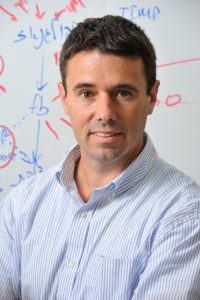
Technion researchers have developed a technology for delivering nutrients to plants which increases the penetration rate of nutrients into plants from 1 to approximately 33 percent. The technology exploits nanoscale delivery platforms which until now were used to transport drugs to specific targets in the patient’s body. The work was published in Scientific Reports and will be presented in Nature Press.
The use of the nanotechnology for targeted drug delivery has been the focus of research activity conducted at the Laboratory for Targeted Drug Delivery and Personalized Medicine Technologies at the Wolfson Faculty of Chemical Engineering. The present research repurposes this technology for agricultural use; and is being pursued by laboratory director Prof. Avi Schroeder and graduate student Avishai Karny.
“The constant growth in the world population demands more efficient agricultural technologies, which will produce greater supplies of healthier foods and reduce environmental damage,” said Prof. Schroeder. “The present work provides a new means of delivering essential nutrients without harming the environment.”
The researchers loaded the nutrients into liposomes which are small spheres generated in the laboratory, comprised of a fatty outer layer enveloping the required nutrients. The particles are stable in the plant’s aqueous environment and can penetrate the cells. In addition, the Technion researchers can ‘program’ them to disintegrate and release the load at precisely the location and time of interest, namely, in the roots and leaves. Disintegration occurs in acidic environments or in response to an external signal, such as light waves or heat. The molecules comprising the particles are derived from soy plants and are therefore approved and safe for consumption by both humans and animals.
In the present experiment, the researchers used 100-nanometer liposomes to deliver the nutrients iron and magnesium into both young and adult tomato crops. They demonstrated that the liposomes, which were sprayed in the form of a solution onto the leaves, penetrated the leaves and reached other leaves and roots. Only when reaching the root cells did they disintegrate and release the nutrients. As said, the technology greatly increased the nutrient penetration rate.
In addition to demonstrating the effectivity of this approach as compared to the standard spray method, the researchers also assessed the regulatory limitations associated with the spread of volatile particles.
”Our engineered liposomes are only stable within a short spraying range of up to 2 meters,” explained Prof. Schroeder. “If they travel in the air beyond that distance, they break down into safe materials (phospholipids). We hope that the success of this study will expand the research and development of similar agricultural products, to increase the yield and quality of food crops.”
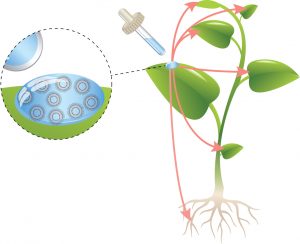
Mesothelioma Successfully Curbed in Animal Models
Israeli and American Researchers Have Successfully Curbed Mesothelioma in Model Animals
HAIFA, ISRAEL and NEW YORK (May 24, 2018) – An international team led by researchers from the Technion-Israel Institute of Technology and NYU Langone have succeeded in stopping the growth of mesothelioma in model animals by inhibiting the heparanase enzyme.
Mesothelioma is a cancer that develops in the mesothelium – a thin membrane that protects the internal organs of the chest and abdomen. In most cases, the disease is caused by exposure to asbestos. This malignancy is resistant to most anticancer drugs and currently has no effective treatment, so there is a high level of interest in and importance to the joint study published in the Journal of the National Cancer Institute (JNCI).
The study was conducted under the guidance of Technion’s Prof. Israel Vlodavsky and his colleague, Prof. Harvey Pass of New York University. The research at Technion was led by Drs. Uri Barash, Moshe Lapidot, and Neta Ilan. Analyzing mesothelioma samples collected by Prof. Pass over the years, the NYU researchers validated the clinical significance of heparanase in the pathogenesis of mesothelioma.
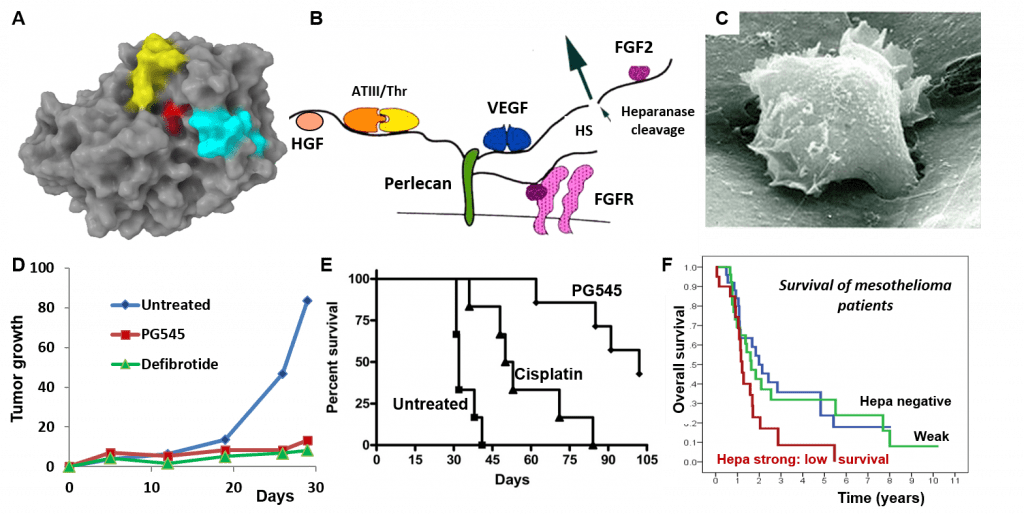
The joint research group (Technion-NYU Langone) found that mesothelioma cancer cells use the heparanase enzyme to break tissue barriers surrounding the developing tumor and attract blood vessels to nourish it. Moreover, the dissolution of the extracellular matrix causes the release of growth-promoting proteins and thus accelerates the development of the tumor. The heparanase secreted by cancer cells and the microenvironment of the tumor triggers a vicious circle in which inflammation and growth strengthen each other.
The researchers succeeded in disrupting this vicious cycle, combating mesothelioma by means of heparanase inhibitors. The study showed, first, that heparanase accelerates the progression of the disease in mesothelioma patients: the greater the amount of heparanase in the patient, the shorter their life expectancy. It also showed, in mouse model experiments, that inhibiting heparanase gene expression inhibits tumor growth. The heparanase inhibitors (PG545 and defibrotide) significantly inhibited tumor growth and greatly extended the survival ability of treated mice. The use of heparanase inhibitors was more effective than conventional chemotherapy such as Cisplatin, currently used to treat this malignancy.
The findings provide some hope for mesothelioma patients around the world, and the researchers will soon be conducting a clinical trial to examine the therapeutic potential of heparanase inhibitors in this deadly disease.
The research was supported by the Laura and Isaac Perlmutter Foundation. Prof. Vlodavsky is a member of the Technion Integrated Cancer Center (TICC) at the Rappaport Faculty of Medicine, and is the world’s leading expert in the study of the heparanase enzyme. His research endeavor led to the appreciation of this enzyme as a target for cancer therapy, a notion that is supported convincingly in the current mesothelioma study.
Prof. Pass is Director of the Thoracic Surgery Division at the Langone Medical Center in NYU and a member of the Perlmutter Cancer Center. Prof. Pass is a leading physician and investigator of mesothelioma and has been collecting tissue samples from his patients since becoming Head of Thoracic Oncology at the National Cancer Institute (NCI). Today, this database contains hundreds of frozen mesothelioma samples, which were used to identify the role of heparanase in mesothelioma.
Click here for the paper in Journal of the National Cancer Institute (JNCI)
BizTEC 2018
Last thursday saw the opening of BizTEC 2018: Israel’s leading technological entrepreneurship program of the Technion.
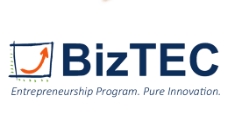
This year, 26 groups were selected out of 120. The program includes prizes of approximately NIS 300,000 and special grants for projects that include the development of hardware. The evening included a panel moderated by Dov Moran, the inventor of the USB drive, in which BizTEC alumni described the value of the process.
Wearable Devices for Early Diagnosis
Wearable Devices for Early Disease Monitoring and Diagnosis
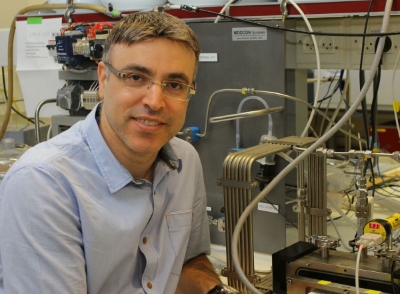
HAIFA, ISRAEL and NEW YORK (May 17, 2018) – Researchers from the Wolfson Faculty of Chemical Engineering at the Technion-Israel Institute of Technology have developed an integrated system for early diagnosis of diseases using wearable monitors. Able to continuously monitor physiological indicators without disturbing the user, the system can repair itself in the event of a tear or scratch, and receives the energy required for operation from the wearer.
This could help spare patients much pain and suffering, greatly reduce medical expenses, and provide extensive and detailed information for epidemiological studies. The system was presented in a review paper published in Advanced Materials by Technion Professor Hossam Haick and postdoctoral researcher Dr. Weiwei Wu (who is now a professor at Xidian University in China).
Wearable devices for medical monitoring are gaining momentum, because they provide a convenient and inexpensive platform for the continuous collection of medical information without the need for invasive procedures. Such devices enable early disease
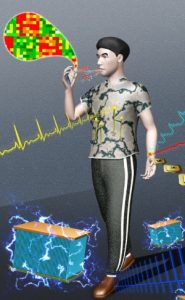
monitoring, before outbreaks, and earlier and more efficient treatment. They can be attached to shirts, jewelry, sweatshirts, watches, shoes, and glasses, and allow the user to go about his or her day without interruption. As a result, such devices are expected to encourage people to be proactive about their health and to reduce avoidance of medical examinations.
“Normal health is characterized by known markers such as 60 to 100 heart beats per minute and 7 to 8 breaths per minute,” said Prof. Haick. “If we detect dramatic changes in the various markers in real time, we can refer the patient to a more comprehensive diagnosis and prevent disease from developing or worsening.”
The system developed at the Technion contains sensors and tools that process the data and transmit it to the authorized medical authority. It combines a series of innovative elements that provide unprecedented monitoring capability:
- A combination of precise sensing and advanced analysis tools
- The energy it requires for operation is derived from the wearer’s body (movements and body heat)
- The device is made of advanced self-healing materials in case of a scratch or cut
The energy derivation and self-repair give the new device a long lifespan, and prevent the need to turn off the system for repair or charging. “This system will not just continuously monitor physiological markers in the wearer. It also aid the long-term collection of extensive information that may be used for epidemiological studies,” said Prof. Haick.
Although the system’s components already exist, a platform that integrates them all has not yet been developed. It requires a complex array of sensors, a tiny and flexible circuit board for measuring the markers, and components that process the information and transfer it to the cloud. All of these are being implemented in the new system being developed by Prof. Haick’s research group.
About the researchers
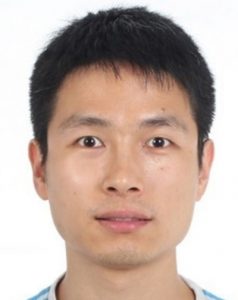
Prof. Hossam Haick is a faculty member at the Wolfson Faculty of Chemical Engineering at Technion and a member of the Russell Berrie Nanotechnology Institute (RBNI). He has been recognized primarily due to developing an innovative, non-invasive system for medical diagnosis based on breath. Prof. Haick heads the SNIFFPHONE consortium, which integrates this system into a cellphone so that the data will be uploaded to the cloud for analysis by qualified medical personnel. In 2016, Prof. Haick published an international study in the scientific journal ACS Nano, which examined the unique diagnostic technology he had developed. The study involved 1,404 patients from 5 countries and confirmed the value of the technology for the early diagnosis of 17 different diseases: lung cancer, bowel cancer, head and neck cancer, ovarian cancer, bladder cancer, prostate cancer, kidney cancer, gastric cancer, Crohn’s disease, ulcerative colitis, irritable bowel syndrome, Parkinson’s (two types), multiple sclerosis, pulmonary hypertension, preeclampsia, and chronic kidney disease. The system diagnoses these diseases with an accuracy of 86% on average.
Dr. Weiwei Wu completed his undergraduate degree in chemistry and a doctorate in physics and materials chemistry at Lanzhou University in China. The present study was conducted while he was a post-doctoral researcher under the direction of Prof. Haick. He is currently a professor at the School of Advanced Materials and Nanotechnology at Xidian University in China.
Click here to the paper in Advanced Materials
An Energetic Future
Umbrella for Future Energy
The 32nd Umbrella Symposium on Energy Conversion and Storage was held at the Technion with the participation of researchers from Jülich Research Centre and from RWTH Aachen University in Germany
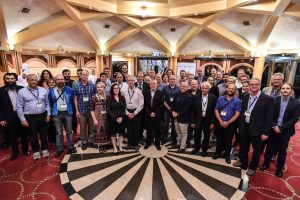
In April, the Technion held the 32nd Umbrella Symposium, dedicated to energy research with an emphasis on energy conversion and storage. These conferences are held in collaboration with two German institutions; the Jülich Research Centre and RWTH Aachen University, with the purpose of promoting collaborative research between the three institutions. The latest conference in the series was led by the Grand Technion Energy Program (GTEP) at the Wolfson Faculty of Chemical Engineering.
“The Umbrella program is an example of a ‘whole that is larger than the sum of its parts,” said Executive Vice President for Research Prof. Wayne Kaplan. Prof. Sebastian Schmidt, a member of the Jülich Research Centre’s Board of Directors said, “The term umbrella means that the three institutions operate out of a common spirit and common topics. In the last two years, following changes in the conferences’ format, there has been a significant increase in registration. It’s a great success.”
“The Grand Technion Energy Program was established 10 years ago and recently underwent a strategic process to examine possible directions for development for the next ten years,” said Director of GTEP Prof. Yoed Tsur. “This year, as part of the important relationship with the Jülich Research Centre and Aachen University, we awarded a special prize to young researchers from each of the three institutions.”
The winners are Prof. Matthew Suss from the Technion for the development of devices that combine energy storage and continuous water desalination; Prof. Stefanie Elgeti of Aachen University for modeling wind turbine blades; and Mr. Yasin Emre Durmus of the Jülich Research Centre for the development of silicon-air batteries.
The Director of the Institute for Energy and Climate Research at the Jülich Research Centre, Prof. Lorenz Singheiser, concluded the conference with the statement: “This was a rare opportunity to take a break from ongoing work for discussions, conversations, and an overview of the most advanced research in the field. The German representatives all agree that the conference is a great success.”
Agile Focus Strategy for Startups
Agile Focus Strategy for Startups: Oxymoron or Key Success Factor?
A PhD study done at the Technion’s Industrial Engineering and Management Faculty turns into a practical new book for entrepreneurs and innovators, offering a simple framework for setting a promising strategy based on the successes and mistakes of hundreds of startups.
One of the most common pieces of advice for entrepreneurs is to adopt a ‘laser-sharp’ focus approach, wherein they pursue a single narrow market opportunity in order to make the most out of their scarce resources. And because innovation is often fraught with uncertainty, they must also stay flexible and agile so that they can adapt quickly.
Without a doubt, both focus and flexibility are crucial elements for successful startups. But the two are often contradicting. In fact, a narrow sharp focus may lock the company into one specific direction, and actually hinder its agility. So how, if at all, can entrepreneurs manage this delicate balance?
Dr. Sharon Tal – a marketing lecturer and the former manager of the Technion Entrepreneurship Center – saw startups dealing with this dilemma over and over again when mentoring budding entrepreneurs at the center. Intrigued by this question, her PhD study examined the early strategic choices of startups. In an in-depth research, she interviewed technology entrepreneurs to understand how they choose their market focus and how they manage the trade-off between focus and flexibility.
Her study found that 72% of the companies changed their market focus within the first three years, which illustrates the importance of startups not sacrificing their agility for the sake of sharper focus. In fact, firms that were able to manage both turned out to be the most successful startups in her sample. These companies consciously strived to avoid locking in by keeping a few related market opportunities open. Acknowledging these future options helped them develop their resources and capabilities in a more general manner. It also made their firm more robust to change, without compromising the pursuit of their most promising opportunity. Sharon and her research colleague Prof. Marc Gruber (EPFL, Switzerland) termed this the Agile Focus Strategy.
The researchers say that companies of any size and stage – from small startups to large enterprises – can embrace this strategic reasoning and adopt an Agile Focus Strategy. They also say it can be accomplished in three clear steps:
- Identify additional market opportunities that could be suitable as your backup or growth options. A backup option is one you will want to pursue if you are not successful with your current opportunity. A growth option is a market opportunity you will want to pursue once you are successful with your current opportunity.
- Evaluate the relatedness of these possible options to the market opportunity you are focusing on. Relatedness means that the ability to develop and deliver the product – for both markets – requires relatively similar resources and capabilities. The more related an option is, the more you can leverage your existing competencies to succeed in it. And this is exactly what we want.
- Pick at least one backup and one growth option to keep open. Keeping an option open means that you invest very few resources and management attention only to monitor it and to make sure not to lock yourself out of this path. So, when you develop your venture’s unique abilities, resources and networks, you keep these options in mind. This is exactly what will keep you flexible and nimble over time.
To help entrepreneurs and innovators design their market opportunity strategy, Sharon and Marc recently launched a new book – Where to Play (Pearson Financial Times). In it, they present a visual, easy-to-apply framework for identifying, evaluating and strategizing market opportunities, in order to get the most value for your innovation. This proven method is based on the successes and mistakes of hundreds of startups. It nicely complements other well-known business tools, including the Business Model Canvas and the Lean Startup Methodology.
In fact, in a recent course done at the MBA program of the Technion, students applied this framework on Technion related inventions with great success. One of the key take aways from this course was that startups can make informed strategic choices that keep them both focused and agile. Without being open to alternative paths while concentrating limited available resources, and without the ability to efficiently handle change or adaptation, they may simply lose the race.
Where to Look for Happiness (and How Twitter Data Can Help!)
HAIFA, ISRAEL and NEW YORK (May 10, 2018) – What is the connection between a geographic location and the emotions it elicits? Which places tend to make people happy and which cause them pain or sorrow? A joint research team from the Technion-Israel Institute of Technology Faculty of Civil and Environmental Engineering and AT&T Research Laboratories has discovered that there is a correlation between location and emotional state.

The research was performed as part of the doctoral work of Ben Galon, under the supervision of Dr. Yaron Kanza, of AT&T Research Laboratories, and Yerach Doytsher, of the Technion Faculty of Civil an Environmental Engineering. The three developed a method which analyses social media posts, such as Twitter tweets, to map emotions in an urban space.
The emotions map generated with this technology presents the prevailing emotions expressed in various locations. Such maps have a variety of possible applications, including assisting tourists choose spots that are expected to elicit happiness or romantic emotions, and to avoid places that stir up emotions like anger and hatred. Using the maps would enable urban planners to identify areas that elicit negative emotions and to tailor them to generate other emotions. And social scientists could learn about the correlation between community behavior and the environment, and use that information to identify areas that enhance artistic emotions or that arouse anger that can lead to political activism.
To date, emotion maps have been based on monitoring human volunteers equipped with a sensor that registers numbers like pulse and blood pressure. This approach highly limits the quantity of data that can be collected. With the research team’s new approach, however, maps can be generated from an enormous volume of data.
In the framework of this research, the researchers correlated emotion to a location by analysing geotagged posts. The algorithm they developed enabled them to identify significant correlations between emotion and a location, while filtering out random correlations.

The researchers had to overcome three key challenges. First, the social media posts were typically short, sloppily written and contained expressions, abbreviations and slang that challenged accurate emotion characterization. Second, a broad spectrum of emotions was expressed in each place and therefore, it was important to filter out the weak and random correlations so that only the significant correlations were maintained. Finally, to obtain significant results within a short time, a fast algorithm, capable of querying an immense volume of data, was necessary.
The proposed approach was assessed on a pool of tens of millions of posts generated in New York City. High levels of anger, for example, were identified in public transportation stations; sadness and anger were prevalent in high schools; and anxiety could often be found on university campuses as well as in Madame Tussauds Wax Museum. Happiness was detected in restaurants and parks, at times accompanied by surprise. All the assessed emotions were prevalent in theatre and cinema areas.
There were some surprises, said the researchers, including the high expression of sorrow around the Apple flagship store in Manhattan, and a high frequency of expression of rejection and disgust in a high school specializing in design.
According to Galon, “further research will focus on in-depth analysis of the results, in efforts to understand the roots of these emotion-location interrelationship, and on integrating a time parameter to the new emotion maps.”
TechnoBrain 2018: Return of the EggCopter
Doctor Bob’s TechnoBrain 2018: Excitement and creativity at Technion’s EggCopter competition
Led by 85-year-old Yishai Zimmerman, the Zimmerman family from Kibbutz Ein Harod Ichud won today’s TechnoBrain 2018 competition by successfully designing a device for dropping raw eggs from 40 meters
HAIFA, ISRAEL (MAY 3, 2018) – On Wednesday, May 2nd, a large crowd gathered on the lawn of Technion’s campus to view “EggCopter X20”. EggCopter is a quirky competition featuring creative student engineers with homemade devices designed to drop four raw eggs each from a 40-meter-high crane while breaking as few eggs as possible. A total of 14 teams took part, with teams comprised of groups of students and families.
Tensions were high as the devices were hoisted into the air one-by-one by the crane and then released. Some floated gently to the ground, while others plunged at full speed to their messy demises. The hundreds of onlookers held their breath after each landing, while judges determined how many eggs successfully survived the fall.
EggCopter X20 is part of this year’s Doctor Bob’s TechnoBrain competition, an annual event conceived in 1997 by the late Neev-Ya Durban, then a student at Technion’s Faculty of Aerospace Engineering. Durban founded the competition “to get students away from their textbooks and computer screens and give them an opportunity for creative expression while coping with complex problems in a fun atmosphere.” Tragically, Neev-Ya Durban was murdered in 2003 in Tel Aviv. His parents, Prof. David and Rachel Durban, were part of the jury in today’s event. “Neev-Ya’s vision and dream has been fully accomplished,” said Prof. Durban. “Today’s competition was heartwarming because what we saw was the essence of Engineering.”
The 14 teams were judged according to several criteria: the number of eggs that reached the ground intact; the percentage of eggs that didn’t break; speed; how close the device landed to the target; and design.
First prize went to the Zimmerman family’s simple yet effective invention made of sponges, empty water bottles and a yellow parachute. Each of its four raw eggs rested in a sponge “nest” and, amazingly, three of the four survived the 40-meter drop intact! The Zimmerman team, which participated in five previous TechnoBrain competitions, was led by 85-year-old Yishai Zimmerman from Kibbutz Ein Harod Ichud. They won a NIS 10,000 cash prize.
The second prize, worth NIS 5,000, went to a team consisting of three generations of the Hakim family, the youngest of whom is in 1st Grade. Their device, made of water bottles and parachutes, plunged straight down in 4.5 seconds with two eggs remaining intact.
Three Technion students, Max, Shir and Daniel, won the NIS 3,000 third prize even though their invention was slow to disconnect from the crane’s hook and essentially crash landed. Despite these mishaps, three eggs survived the ordeal.
The competition was brilliantly organized by Marina Minkin, a graduate student at the Technion Computer Science Department, and moderated by Prof. Irad Yavneh. The judges were Prof. Alon Wolf, Prof. Alon Gany and Prof. Tanchum Weller, and Neev-Ya’s parents.
Doctor Bob’s TechnoBrain competition was made possible thanks to the generous support of Dr. Robert Shillman (Doctor Bob), a Technion benefactor. He is a Technion Guardian – a designation for those who have reached the highest level of support for the University, and will receive an Honorary Doctorate from Technion in June.
Improved Swimming for Nanoscale Robots
Optimal Propulsion: Helping Nanoscale Robots Swim Better in the Human Body
HAIFA, ISRAEL (May 1, 2018) – Researchers from three Technion-Israel Institute of Technology departments have completed an interdisciplinary study that reveals the optimal configuration for nanoscale robots that can travel within the human body to perform a variety of tasks. The model improves previous nature-inspired models.
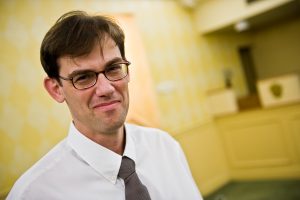
Led by Professor Alex Leshansky of the Technion’s Wolfson Department of Chemical Engineering, the research team comprised of members of three different Technion faculties (the others were the Department of Mathematics and the Department of Physics) analyzed the optimal configuration for nanoscale robots that are designed to “swim” through the human body. Their findings were recently published in Science Robotics.
For the last decade, research groups around the world have been working to develop nanometer- or micrometer-scale robots that can move in a liquid environment. These robots provide diverse opportunities in important biomedical applications, including drug delivery.
The original inspiration for the design of these miniature robots comes from bacteria, which move using slender helical tails called flagella. As the flagellum rotates in the liquid, it creates friction that propels the bacterium. Inspired by this natural mechanism, research groups have developed tiny spirals that are driven by a rotating magnetic field.
Although this method offers a number of advantages (including low power requirements of magnetic field), creating these spirals is complicated. As a result, researchers have suggested using random clusters of magnetic nanoparticles as tiny “swimmers.” Such clusters can be easily fabricated using a simple aggregation process. But in the article published in Science Robotics, the Technion researchers demonstrate that this approach does not yield optimal results.
As part of their study, the Technion researchers developed a theory for calculating the optimal speed of these magnetic swimmers based on their shape and magnetization. As a result, they can now calculate the maximum possible speed of random clusters, and the optimal shape for these tiny swimmers. Contrary to expectations, they found that the thin spiral inspired by nature is not the optimal shape, but rather a thick arc with twisted ends. This optimal propeller was shown to move much faster than the previously developed random clusters.
According to Professor Leshansky, the study’s findings will lead to the development of more efficient microrobots: “Most researchers in the field assume that the biomimetic helical shape for tiny swimming devices is the optimal one. To our surprise, we discovered that the optimal shape is rather different than helix and were able to demonstrate more efficient structure.”
TechnoBrain 2018: EggCopter X
Invitation to the Media
TechnoBrain 2018: EggCopter Returns to Technion After 20 Years
Who will successfully drop an egg from a height of 40 meters without it breaking?
This question will be answered on Wednesday at the Technion campus
On Wednesday afternoon, May 2, 2018, Technion will host the finals of the 2018 TechnoBrain competition, “EggCopter X 20.” First, second and third places will receive NIS 10,000, NIS 5,000, and NIS 3,000, respectively. The annual competition takes place in memory of the late Neev-Ya Durban, a Technion alumnus and an outstanding student, and it is sponsored by Doctor Robert Shillman (Doctor Bob) .
This year’s competition will be a tribute to the first TechnoBrain held in 1997, the EggCopter, when eggs were dropped from the roof of the tallest building at Technion. This time they will be released from a 40-meter-tall crane in the center of campus.
Fifteen teams have reached the final stage. The contestants were required to design and construct a device that will ascend to a height of 40 meters and then be released with eggs inside. The raw eggs must reach the ground intact, within the shortest amount of time possible, and come to rest within a certain distance from the center of a target marked on the ground.
The TechnoBrain competition was conceived 21 years ago by the late Neev-Ya Durban, then a student at Technion’s Faculty of Aerospace Engineering. Durban, who founded the competition out of a desire to challenge Technion students with creative engineering tasks, said at the time, “The competition was conceived in order to get students away from their textbooks and computer screens and give them an opportunity for creative expression while coping with complex problems in a fun atmosphere.” Durban took his inspiration from the Mars Pathfinder project, the first landing of a probe on Mars in the summer of 1997.
The writer Tamar Bornstein-Lazar, who read about the competition, wrote Kofiko at the EggCopter Competition, a book that later inspired an episode in Israel’s Kofiko TV series (season 2, episode 19).
Neev-Ya Durban enlisted in the IDF upon completing his undergraduate studies at Technion. During his military service, he began his graduate studies at Technion’s Faculty of Biomedical Engineering. Tragically, he was murdered in March 2003 near his home in Tel Aviv.
The competition is being organized by Marina Minkin, a graduate student at the Computer Science Department, with Prof. Irad Yavneh moderating the event. The judges are Prof. Alon Wolf, Prof. Alon Gany, Prof. Tanchum Weller, and Neev-Ya’s parents, Prof. David Durban and his wife Rachel.
The competition and prizes are sponsored by Doctor Robert Shillman (Doctor Bob), who graduated from Technion and then completed his PhD at MIT.
The competition will take place on Wednesday, May 2, 2018, from 12:30 to 14:30, on the boardwalk opposite the central lawn at Technion.
Reporters and photographers are welcome.

